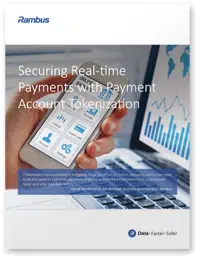
Automated clearing fraud represents an ongoing problem for banks, but the introduction of real-time payments adds another layer of complexity. This white paper starts by examining why real time payments present new threats to banks and clearing houses, before moving on to a survey of current fraud screening and scoring methods, and detailing why they don’t map well onto real time payments.
The paper next outlines how tokenization of payment account details can mitigate fraud, particularly through context-specific use and the ability to apply policies to tokens. Five key benefits of payment account tokenization are set out and explained.
The paper then explains how tokenization works, using illustrated examples of creating a token and using a token in a transaction.
“Over time, real account numbers will no longer be shared, meaning they cannot be stolen,” the authors explain. “Tokenization has succeeded in mitigating fraud elsewhere in financial services, it is now ready to do the same for account-based transactions.”
Securing Real-time Payments with Payment Account Tokenization has been produced and sponsored by Rambus and approved by the NFC World editorial team.
How to access this document
This 12-page white paper is available free of charge to NFC World Knowledge Centre members (PDF format, 3MB).
This resource is available free of charge to NFCW Knowledge Centre members. Log in or join for free to get immediate access.
Explore more...
Companies
This item is part of What's New in Payments.
